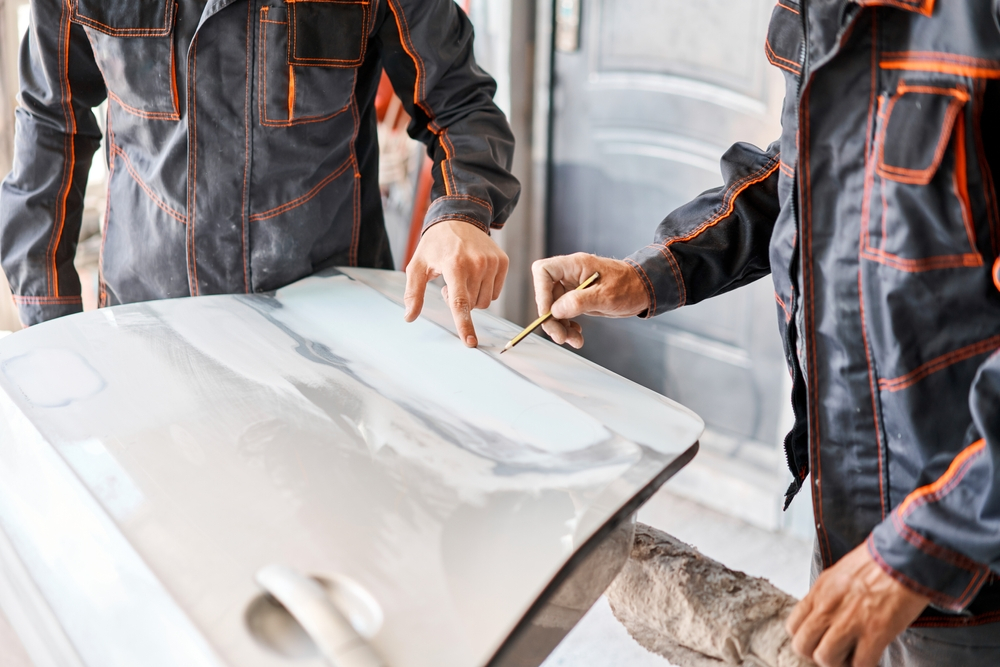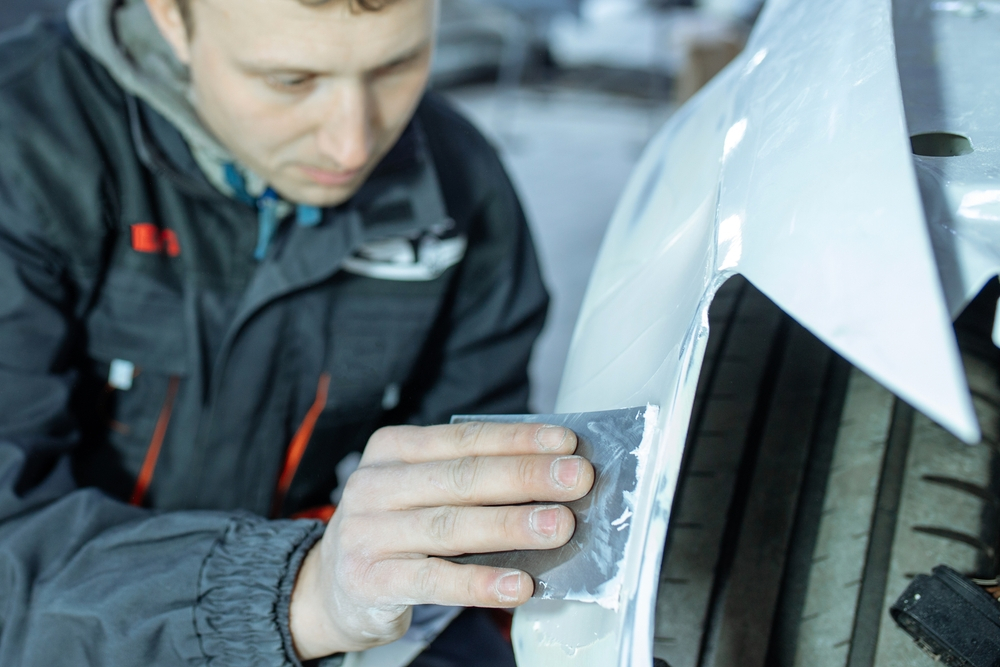How Long Can Primer Sit Before Painting – 24 hrs Max
How Long Can Primer Sit Before Painting? It is a frequently asked question by a professional and beginner painter. The primers and paint have a deep relationship and determine the durability of paint on the inside or outside surface. Primer is essential to apply as it makes a protective layer on the paint, increasing its shine and quality.
Using more primer decreases the chances of fading up the paint and damps on the wall or furniture. So the question is how long between primer and paint. The time between primer and paint depends upon several factors, including paint type and the surface on which you have just completed the painting process.
And if I talk about the time, the average ranges from some hours to 30 days. However, this is not a fixed value and depends on the mentioned factors. Environmental factors, including temperature, humidity, and heat, must be considered while counting the time.
This article provided complete information on how long should be dry before painting and how long to wait to paint after primer. Read this entire post, and feel free to ask any questions you have.
How Long Can Primer Sit Before Painting?
The time of primer on the painting depends upon the paint type and primer type. Some primers mainly include latex primers which can sit for 30 days. Oil primers can sit for 14 days. To know more about primer sitting time and warranty, check its label.
Checking the label can help you to see an estimate of the primer sitting time. However, paint type and surface type also determine the primer’s sitting time. Heat and humidity are other factors necessary in considering the primer sitting time.
In case the primer is no longer working and its time has expired, in this case, you need to use a primer again. It can avoid the to add dust and grim particles to the surface.
Can I Paint without Primer?
Most people claim that they achieved good results even without adding a primer. So, why do they need to use a primer, so the question is can you paint without a primer? You may don’t need a primer if the paint is of top-notch quality. Adding a primer layer before paint helps make it durable and strengthen. The result includes brighter color and minor peeling, which leads to a fine finish.
The need for primer also depends upon the painting purpose, i.e. what is the goal of the paint you are applying on the wall or furniture. If you aim to add a second layer of primer to increase darkness or quality, you may not need a primer. In my experience, if you want to hide damps and fads, you don’t need a primer. Also, if you are going to seal the paint, then adding primer is not important at all.
How Long Does Primer Take to Dry?
People are confused about How Long Does Primer Take to Dry before painting. Most of us want to paint right after the primer is applied but don’t know how much time I should wait to dry the primer.
If you want to know how long for paint primer to dry, read this section.
The factors related to the primer drying time include temperature, humidity, and primer quality. Most of the primer takes 30 minutes to 1 hour to dry, depending upon their quality. Some primers take more time, i.e. 24-48 hours, to dry. Still How Long Can Primer Sit Before Painting is confusing. Don’t worry; here are some top primers that I mentioned after their review and experience given below:
1. Latex Primer (Acrylic)
Latex primer is a water-based primer. Its primary purpose is to fill the crevices, peels, and cracks on walls and the relevant surfaces. The primer’s drying time is 30 days, and after this time, you must re-prime the surface for better results and a fine finish.
If I talk about the features of latex-based primers, they can easily mix up with acrylic and water-based paint due to their similar texture. This primer is easy to clean and dries up quickly, which is another advantage. You can even use any solution, soap, or warm water to clean it.
Moreover, there are multiple types and qualities of latex primer. Most of them dry up in 3 to 4 hours so you can apply paint after this time. It works best for both the interior and exterior surfaces anytime. The inside and outside surfaces give a luminous finish and good texture after applying paint after the dried primer.
2. Oil-Based Primer
Another essential type of primer is oil-based, due to the attached oil group these are known as alkyd primers. This primer is helpful for oil-based paint and latex-based paint rather than only a single type of paint. Even people use any color after applying this primer due to its delicate texture and many other features.
The main feature of this primer is to bear a wide range of temperature variations. It is entirely flexible enough and has a good texture for any paint.
Another feature of this pain is its ability to work as a stain-blocking element. It helps the stain to prevent from catching multiple stains and spots due to any external substance.
This primer requires 24 hours or more time to dry. Hence, it’s not good if someone wants quick painting right after applying the primer.
The most significant disadvantage of this primer is that it exits some rays, including volatile organic compounds, which is unsuitable for human health. So, use this paint wisely and with great care.
3. Shellac Primer
One of the fast-drying primers is the shellac primer. It is good to use for interior surfaces where there is not enough temperature or sunlight. It is more adhesive as compared to all other types of primers. Hence, applying paint on the surface where this primer is used is accessible and supportive for everyone.
The main feature of this primer is blocking stains and spots, giving a whole shine and finish to the surface. It is helpful for all surfaces, including cement, wood, plastic, and metal. This primer only takes hours to dry, which is the ideal time for those who want a quick painting after a primer in an emergency or a normal condition.
4. Urethane Primer
Another fast-drying and highest-quality primer is the urethane primer. It dries up quickly in 30 minutes which is one of the significant advantages of this primer. It’s good to use on any surface, including metal (iron, aluminum, steel), wood, and fiberglass. Even you can use it on surfaces that are already painted.
This primer is valid for cars where the bodywork is already completed. However, this paint does not catch any rust or dust on the surface. Hence you need to apply an epoxy primer or any other dust-resistant primer before its application.
Most of you are wondering why you should apply a second layer of primer once you have applied the first one. The answer is that it’s easy to dry and enhance the shining of the surface for painting.
Note: as I mentioned earlier, the drying process is 30 minutes; however, I don’t recommend applying paint right after this time. You can wait for some hours to allow its adhesive nature to sustain on the wall or any other surface.5. Epoxy Primer
Another fast-drying of the ideal primers mentioned by our professionals is the epoxy primer. It comes in traditional primers due to its usage and features. Still, it works better than many of the advanced-style primers. Here are some features of this primer that attract people to buy even it’s the price is higher than other primers:
6. Acrylic Lacquer Primer
It is another crucial type of primer that is helpful for automotive. It is good enough to adhere to automobile surfaces and offers a fine finish. The benefit of this paint is that it comes at a significantly lower price than many other primers. It is affordable to buy for everyone unable to buy an expensive primer.
The time of the primer differs and depends upon the texture. Most of the acrylic lacquer primer gets dry in 20 minutes to 40 minutes. However, some primers take more time. You can quickly check the drying time from the label. It is highly adhesive and resistant to rust and dust.
Note: since this is made for automobiles, don’t try to use it on other surfaces, including wood, walls, and metals apart from the vehicles.How Long to Let Primer Dry Before Spray Painting?
Most people have a myth that it’s unnecessary to wait for the primer to dry before spray painting. However, it’s not true. A primer always needs to dry no matter what paint you apply. Whether it’s spray paint or any other type of paint, it needs to dry, don’t try to spray paint even if the primer is a little wet. Instead, wait for some hours to dry the primer.
To get the best results for painting and a complete finish, it’s good to fast dry the primer if you are in a hurry. To fast-dry paint, the required temperature is 65 to 85 degrees F, which is ideal even if you use outside or inside paint.
Additionally, don’t add multiple quotes of primer or paint until the primer is dried to the optimum level. Wait for at least 2 days after applying the primer. Again keep in mind that the length of the primer to dry is not fixed, and you need to wait some hours to apply the paint. The best way is to read the primer’s label and then use the color after the specific duration most manufacturers recommend.
How Long Let Primer Dry Before Painting a Car?
Some specific automotive paints and primers have a particular duration to dry. These primers and paints are different from other paints, and their advantage is that they get dry quickly. Hence, if you use these products specifically on vehicles, applying paint and a primer is accessible. However, as per our experience, I mentioned some specific and average durations for an automotive primer.
Some primers dry in 30 minutes to an hour, some take more time, i.e. 6-8 hours, and some take 24 hours. However, it’s not a fixed value. I recommend waiting for 24 hours and then applying paint no matter the time for the primer to dry. However, you can use it after the primer is dried when you are in a hurry to apply the color.
Factors That Affect the Primer’s Sit Time to Dry
As every one of you knows, a primer has its own specific time to dry. However, some factors affect the drying and setting time of a primer. I explained these factors with effects in this section which can help you to know how long should I wait to paint after priming at the advanced level:
Temperature and Humidity
Both of these factors, temperature, and humidity, are interrelated to one another. People have misconceptions, and they think that the hotter the area, the less is time for the primer to dry. It’s not true at all, and if there is a more desirable area and humidity in the environment, then primer takes more time to dry.
On the other hand, if there is an average temperature and less humidity, then more chances to dry the area in less time. Mostly 74 degrees F temperature is required for the primer to dry quickly.
Dust and Debris
Most professionals recommend not waiting for more hours and applying the paint as soon as the primer gets dried. The reason behind it is the attack of dust and debris on the primer. Primer is a susceptible compound, and dust or garbage can cause heavy damage to the primer. So, apply the paint quickly without waiting for more, as this debris and dust have more minor effects on the color directly.
Don’t worry; in case debris and dust have already attacked your surface, in this case, you can apply a towel or a smooth cotton cloth to clean the surface.
Application
Primer and paint drying time also depends upon your way of application. A thin layer of primer dries quickly compared to a thick layer of primer. On the other hand, if you are applying the primer with a spray gun, then more chances for the primer to dry quickly.

How Do You Make Primer Dry Faster?
Here are some primer paint tips following which you may know how to dry the primer faster. All these tips can help you to decrease the primer drying process.
Use of Direct Heat
It is a highly recommended way to make the primer dry faster in a short time. There are multiple ways to apply direct heat to the primer on a specific surface. Radiators, heat guns, blow drivers, and other tools are the best products for it.
Lowering the Humidity of Your Space
The following necessary process is to lower the humidity of the environment where you have applied the primer. A humidifier is the best product for this purpose. And if you can’t afford a humidifier, the following way is to wait for the environment when enough humidity is available.
Buy A Fast Drying Primer
If you don’t have enough time and want to finish your project quickly, then buying a fast-drying primer is a good way. Most people don’t know about the fast-drying primer and buy a standard or any typical primer. In this case, you can use a fast-dry additive to assist in the quick-dry primer procedure.
Coat Layers
Coat layers of primer are another essential method that can help you fast-drying the primer. Always apply a thin primer layer if you want to dry fast the primer. Don’t apply two or more layers until these are necessary.
Using Air Circulation
Air circulation is another process that can help fast-dry the primer. Open all the doors and windows, and remove cartels. Additionally, use an air circulator to make the drying process fast.
Can You Paint Over Tacky Primer?
No, it’s not good to use paint over the tacky primer. Many reasons make the color unfit to use on adhesive primer. First, using color on tacky primer means increasing risks for the paint and primer blunder. Both of them will not work enough once they have adhesive relations.
So, the best way is to let the primer dry or fix the tacky primer. To fix it, I recommend using extra air and heat. A humidifier also works fine to resolve adhesive primer.
How Many Coats of Primer Should You Use?
Coats, layers, or primers depend upon the primer type and paint type. If you are using a spray primer, it’s good to apply two or three layers of primer. However, these layers of primer must be thin. Additionally sometimes surface also matters a lot.
On the other hand, some paints require a single layer of primer, and some require more. You can check the quality of color and primer and then apply the primer layer depending on your needs. Use an optimum amount of primer, and don’t override it. Too much or too low primer can cause serious issues.
Conclusion-How Long Can Primer Sit Before Painting
Hopefully, now you have enough information on How Long Can Primer Sit Before Painting. It depends on the paint type, primer type, and many other factors mentioned.
Make sure to have enough humidity, temperature, and other necessities that are ideal for a fast dry process.
Follow quick primer dry tips, and if you face any problems in the whole process, feel free to ask us anytime. I am always here to solve your problems related to paint and primer.

